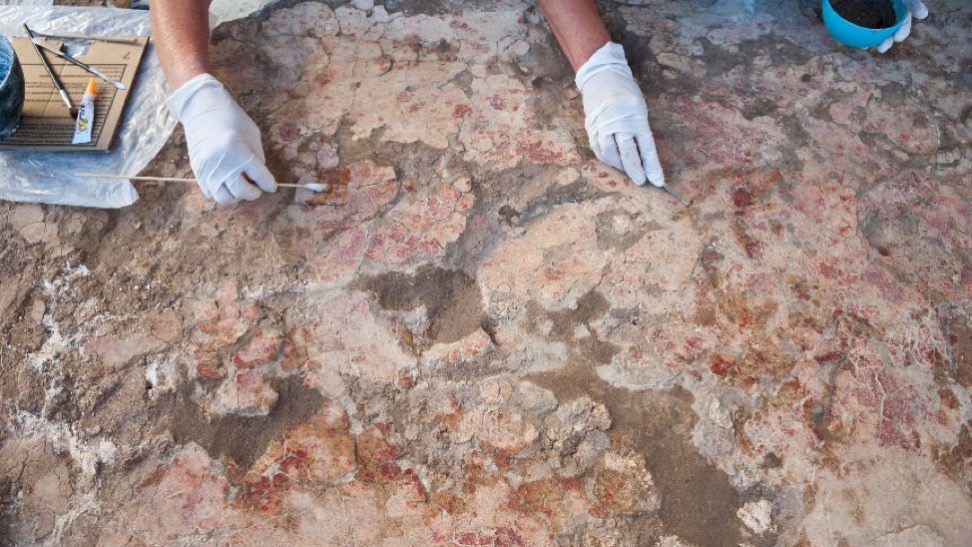
ILIT-AURO. Archaeology of the Second Punic War (Archaeology)
The project deals with a specific period: the Second Punic War, although understood as part of a historical process related to the social, political and cultural changes derived from the Roman conquest in the area of the Ancient Mediterranean. Its geographical scope is played in two scenarios: the Upper Guadalquivir, with the case studies of Baecula, Puente Tablas, Iliturgi and Cástulo; and Italy, where it also analyzes the Battle of Numistro. The Second Punic War and the subsequent Roman conquest of the Upper Guadalquivir meant the opening of a long process of cultural transformation that would not end until the implantation of the Roman imperial system in the first century A.D. It is necessary to investigate from the local scale, from the temporal scale of the event, the real causes and consequences of the conflicts.

Period
As chronological reference points, we are working on a period between 208 BC and 206 BC, the end of the Second Punic War, where all the scenarios that are the object of our project are inserted: Baecula (208 BC); Metauro (207 BC); Iliturgi and Castulo (206 BC).
Institution
University Institute for Research in Iberian Archaeology – Universidad de Jaén.
Web and social networks
https://caai.ujaen.es/
http://www.battlefieldofbaecula.es/baecula-inicio-home
Principal Investigator(s)
Juan Pedro Bellón Ruiz and Carmen Rueda Galán
Juan P. Bellón is the IP of the ILITAURO Project; C. Rueda is the co-director of the Metauro Project of the IPCE). Both belong to the Institute of Iberian Archaeology of the Universidad de Jaén.
Location
Jaén and Italy.
LOCATION
RESULTS
- The location of Baecula. In 2001 it was determined the existence of a battlefield in the Cerro de las Albahacas (Santo Tomé, Jaén), near the oppidum of Turruñuelos (Baecula) (Bellón et al. 2004)
- The archaeological reconstruction of the Battle of Baecula. In 2007 the work process consisted in transcending from the macro to the micro spatial scale. At the end of the work there were 4867 metal objects georeferenced and associated to the battle, among which there were coins, weapons (spears, piles, arrowheads, darts, etc.), impediment material (fibulas, crimps, spurs, bullae, etc.) and above all a large set of caligae tacks (basic to reconstruct the movements of the Roman army) and more than 3116 undetermined objects.
- We have been able to learn the sequence of the occupation of the territory, the effects of the battle and the structures of the landscape.
- Two camps were identified in the area of the battle, which had preserved the traces of their fossilized palisades in the cadastral parcel. These were the camp of Asdrubal Barca, destroyed during the battle, and the second camp of Scipio, which was erected after the battle.
- The siege of Iliturgi and the battle of Metauro. Although it is still in full development, the work has made it possible to contrast Baecula’s methodology in Iliturgi, a siege scenario from 206 BC.
- Thanks to studies on the population of the Iliturgi area, it has been possible to locate the Ianus Augustus, the caput viae that marked the boundary between Betica and Tarraconensis.
- In the case of Baecula we witnessed a transformation of settlement systems after the impact of the Punic War. The patterns changed, but the population continued in its landscape, abandoning, of course, the city. In the case of Iliturgi, its destruction and razing is reflected in its territory: there is no transformation of the system as in the case of Baecula, but rather a vacuum of settlements that may reflect a deep demographic crisis or a forced relocation of the population. These are the keys to understanding the significance of war and its effects on a local scale in order to articulate it on a wider scale.
PICTURES
- New study suggests King Tut’s tomb artifacts are linked to mysterious Osiris ritual (Archaeology News 29/03/2025) - 10 April, 2025
- Many Medieval Manuscripts Found to Be Bound in Seal Skins from the Arctic (La Brújula Verde 09/04/2025) - 10 April, 2025
- Bronze Age cymbals unearthed in Oman reveal how music united prehistoric Persian Gulf cultures (Archaeology News 08/04/2025) - 9 April, 2025


























